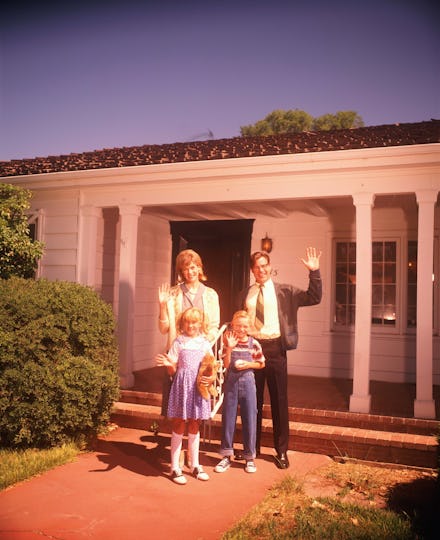If You're 29 or Younger, There's a Phenomenon You've Never Experienced

A real middle class.
Image Credit: Getty
If you think you fit into the middle class economic bracket, then think again. The middle class we often see represented with the typical suburban house with a white picket fence and the family living off a father's steady income doesn't exist anymore — at least not in the way it used to.
According to a new study from the Russell Sage Foundation, middle class wealth is 20% lower today in inflation-adjusted dollars than it was in 1984. In non-economic speak, that means, comparatively, the middle-class family now is much poorer than it was 30 years prior.
So while we all know that the rich are getting richer, this is the proof that the middle class are getting poorer, increasing the wealth inequality gap to toxic levels. Some of the decline can be attributed to the Great Recession that struck a heavy blow to both the housing market and stocks, though only homes are usually a sturdy middle-class asset. Beyond the now-recovering housing market, the study shows that the median net worth for the typical American family began to diminish prior to the recession.
The decline: During the 20 years prior to the 2007 recession, wealth was incrementally rising among all classes at disparate rates. For the top 95th percentile, or the upper class, net worth doubled between 1984 and 2007, while the 50th percentile or the median rose by only 40%. A lot of those overall increases were due to the rising housing market when homes were valued higher.
Image Credit: Russell Sage Foundation
In the aftermath of the recession, "wealth losses were not distributed equally," the study says. American households dwindled in net worth across the board, but the upper-crust classes took a much smaller hit than the other economic brackets.
Since 2003, though, the inequality gaps between the middle class and the wealthy have intensified greatly and at a much more rapid pace. "Households at the 95th percentile held 13.6 times more wealth than the median household," the study says. "This gap increased to 20.1 in 2009 and then 24.2 in 2013."
So what does this all mean? The typical American middle-class household has a smaller net worth than their 1984 counterparts. (But that does not necessarily mean that a 1984 middle class family lost money over the past 30 years.) On the positive side, the middle class fared better than the low 25th percentile that saw fairly little growth in the years before the Great Recession and then plummeted a whopping 60% afterward.
Middle-class households are suffering. Whether that's because wages have stayed the same and living expenses have increased or that the housing market crashed is irregardless. The important thing is that wealth inequality is progressively widening and "there is little evidence that these trends are likely to reverse in the near term," the study concludes.
So our parents may be the last ones to have experienced a thriving middle class that could afford a sustainable livelihood and had the promise of mobility.
Meanwhile, today's middle class fights to stay afloat while the rich amasses more and more wealth, making the American Dream an unattainable fantasy for many.